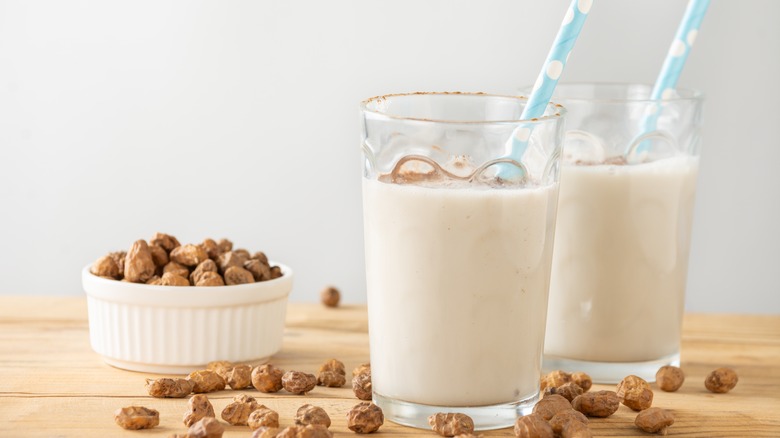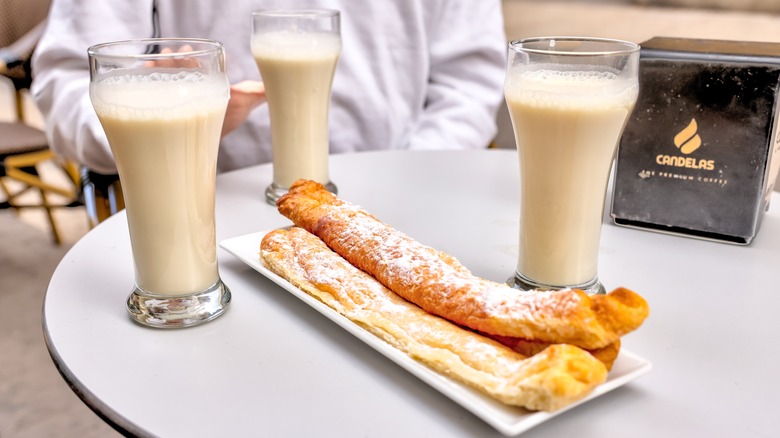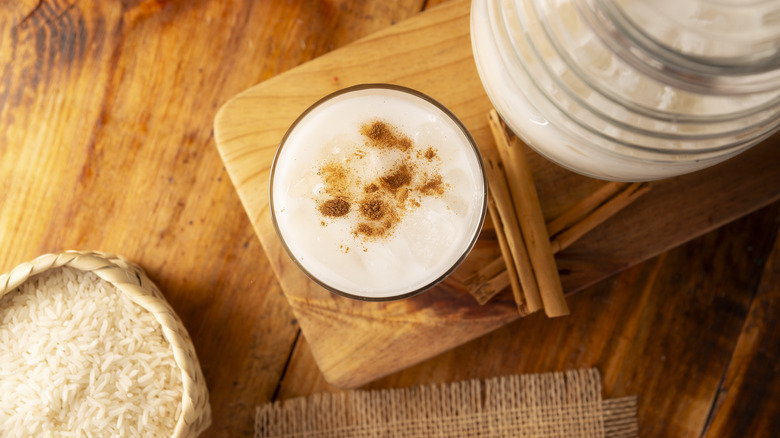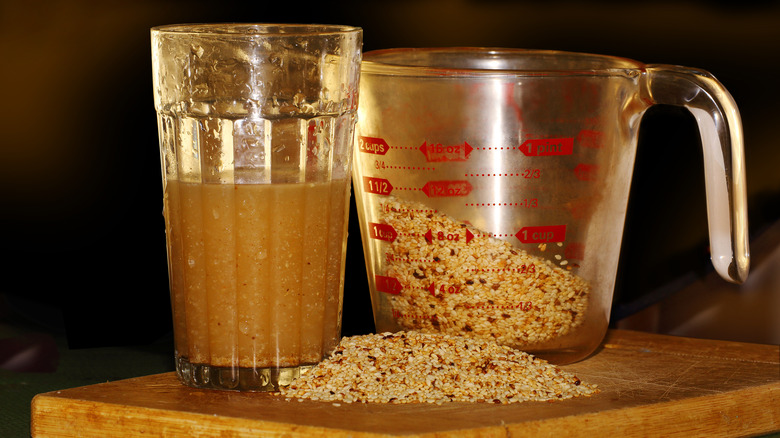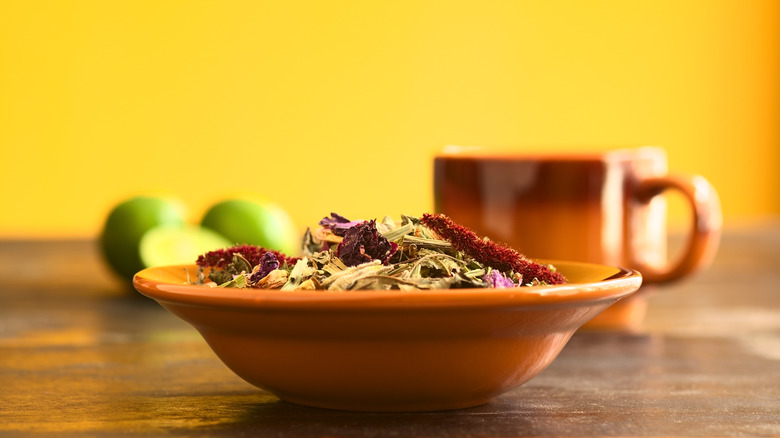How Horchata Is Enjoyed Around The World
Most of us are familiar with horchata, a delicious beverage that satisfies a sweet tooth and quenches thirst at the same time. This versatile drink can be made from nuts, seeds, or grains, and flavored with an endless variety of herbs and spices. The original horchata dates back to Northern Africa; it was already a sweet-tasting drink made with ground tiger nuts. As horchata made its way across Europe and the Atlantic Ocean to Latin America, copious different recipes were created along the way. It retains its worldwide popularity to this day — and its incredible diversity of varieties.
Depending on where you are, horchata can be served at various times of year, at different temperatures, and with different ingredients. When served cold, it's the perfect refreshing summertime drink. When served hot, the cinnamon and sugar make it into a top-tier comfort beverage. The near candy-like taste of horchata also makes it a perfect ingredient in desserts, cocktails, and horchata-flavored coffee or espresso drinks. Here are a few ways horchata is enjoyed around the world.
Spain
Spanish horchata is said to have arrived in Spain when the Moors invaded in the eighth century. They brought tiger nuts with them, and found that Valencia was the perfect place to grow them in abundance. The recipe most commonly used in Valencia today is the same as one established in the 13th century and is considered to be a healthy alternative for those who don't drink dairy or are looking for something different. This horchata is known for being high in nutrients like potassium and antioxidants, as well as being the perfect pick-me-up on a hot day.
This horchata is made by soaking tiger nuts in warm water for several hours. After the soak, the tiger nuts are drained and blended with fresh water and a sweetener such as sugar. The drink can then be strained again to remove any excess solids before it's served cold. In Valencia, horchata is often found at restaurants paired with a farton, a sweet pastry-like treat that compliments the nutty flavors of the horchata.
Mexico
Mexican horchata is made using cinnamon and long-grain rice. The rice is soaked for a long period of time — typically overnight — then blended and strained until it has a silky consistency. Something like sugar is traditionally added to sweeten the mixture up. Flavors can be added to suit whoever is drinking the horchata; recipes with shredded coconut, almonds, or lemon peel aren't uncommon.
This version of horchata can also be made with vanilla extract or condensed milk, and is most commonly served over ice. Mexican horchata can be found premade in stores or ordered at many Mexican restaurants. While it may not be the horchata some think of when the drink is mentioned, the flavor is immensely satisfying. Moreover, it is the horchata many think of, thanks to its popularity in the United States.
Puerto Rico
Horchata in Puerto Rico is commonly referred to as horchata de ajonjoli. Though it's similar to Mexican horchata, there are a few key differences. Instead of long-grain rice, this horchata's base is made using sesame seeds. The sesame seeds can be used raw, but toasting them prior to making the horchata produces a deliciously nutty flavor. The sesame seeds soak overnight, and are then strained and blended with fresh water and a form of sweetener.
Common additions to Puerto Rican horchata include rice, almonds, evaporated milk, coconut milk, cinnamon, vanilla, cloves, or star anise. The combination of ingredients makes this drink a perfect mixture of warm, comforting flavors, even when served cold, as it frequently is. Puerto Rican horchata is also sometimes mixed with rum, to give it an extra twist.
Ecuador
Ecuadorian horchata is a unique form of the drink. In fact, this horchata is more akin to a tea than the horchata most are familiar with. To brew this horchata, a mixture of ingredients like amaranth flower, lemongrass, mint, and chamomile are steeped in water for a varying length of time, depending on how fresh or potent they are. The drink is then filtered through ice to retain the horchata's vibrant hue. It's typically served over ice, and some enjoy adding a spritz of citrus for flavor.
This horchata isn't just a delicious beverage, though. It's also often recommended as a solution to ailments such as insomnia and digestive troubles. It's a tricky drink to prepare for someone who doesn't know how to brew tea without ruining it, but it should be on everyone's list of horchatas to try. It's tasty — and it might soothe an upset stomach.
